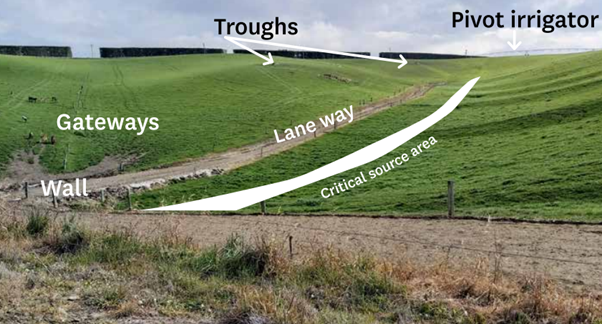If not already sorted farmers need to think about where crops are going in relation to critical source areas, slopes, waterways and choosing paddocks for next year.
Otago had one of the best uptakes in Intensive Winter Grazing (IWG) consenting across the country last year, at more than 250 consents issued, but Ms King notes that some may still need a consent next winter.
“The location of wintering on a property changes year to year, and if people met the permitted criteria this winter, we want them to think about that same criteria for next winter as they are sowing crops and finalising their paddock selection. If they can’t meet this criteria, they should contact Council to talk about the consent process.”
It’s also recommended they have a grazing plan in place, she says.
If people have a consent, they need to make sure they pick a paddock which is included in their consent and submit a new grazing management plan to ORC by April next year.
“Good management around IWG practices has significantly helped reduce the amount of sediment, bacteria and phosphorus getting into waterways, which would otherwise negatively impact water clarity and quality, and reduce freshwater biodiversity,” she says.
An IWG plan for next year should include what paddocks farmers are using, and specifically consider the management of Critical Source Areas (CSA) – the overland flow paths which can accumulate and convey water, and contaminants, to waterways.
“CSAs are common on most farms. It’s really important to identify and manage them, particularly those located on hilly, rolling and undulating land,” says Ms King.

Similarly, farmers need to consider slope requirements.
This is areas where the slope of any land under an annual forage crop which is used for intensive winter grazing must be 10 degrees or less, which is determined by measuring the slope over any 20m distance of the land.
Ms King says ORC is currently looking at new dates for repeating some of last year’s IWG drop-in sessions for farmers around Otago, which could potentially start in late-summer and run into autumn. These will be focused on supporting people with their grazing management plans and a re-fresher on the consent process.
She also noted that while Freshwater Farm Plans for North Otago will begin from 1 February next year, other parts of the Otago region need to keep on with their consenting or meeting the permitted criteria.
Intensive winter grazing pointers
- Intensive winter grazing though a critical source area will need a resource consent
- Strategically graze the paddock to reduce the likelihood of sediment making its way to water
- Consider starting at the top of slopes, back fencing as you go, and leaving CSAs ungrazed
Catchment Advisor assistance
A Catchment Advisor can help you identify CSAs and advise how to manage them.
To arrange a free visit call 0800 474 082 or email catchments@orc.govt.nz
Breakdown of all aspects of Intensive Winter Grazing and consenting
Good Practice Information - Intensive winter grazing
